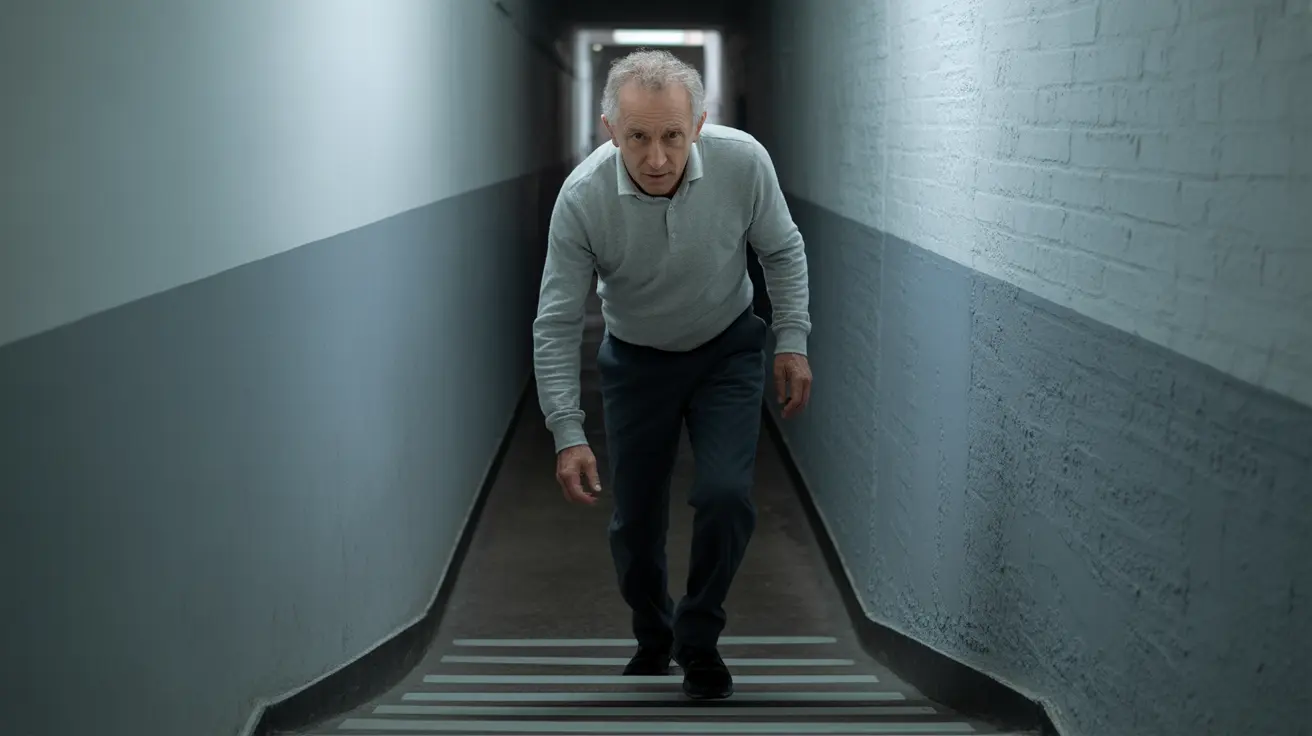Freezing of gait is a challenging symptom that many people with Parkinson's disease experience, significantly impacting their mobility and quality of life. This sudden inability to move forward, often described as feeling like your feet are "glued to the floor," can be both frustrating and potentially dangerous. Understanding when freezing typically occurs and how to manage it is crucial for patients and caregivers alike.
When Freezing Typically Appears in Parkinson's Disease
Freezing episodes typically emerge in the middle to late stages of Parkinson's disease, usually after patients have been living with the condition for several years. While the exact timing can vary significantly between individuals, freezing generally becomes more noticeable and frequent as the disease progresses.
Common Triggers and Risk Factors
Several situations and environmental factors can trigger freezing episodes in people with Parkinson's disease:
- Navigating narrow spaces or doorways
- Attempting to turn or change direction
- Approaching a destination or target
- Experiencing stress or anxiety
- Walking in crowded areas
- Trying to multi-task while walking
Understanding the Impact on Daily Life
Freezing episodes can significantly affect a person's independence and safety. When freezing occurs, the sudden inability to move forward while the upper body continues its momentum creates a dangerous situation that can lead to falls. This risk is particularly concerning because falls in Parkinson's patients can have severe consequences.
Management Strategies and Treatment Options
Medical Interventions
Several medical approaches can help manage freezing symptoms:
- Adjustment of Parkinson's medications
- Timing medication doses more precisely
- Working with healthcare providers to optimize treatment plans
- Consideration of deep brain stimulation in appropriate cases
Physical Therapy and Exercise
Regular physical therapy and specific exercises can help minimize freezing episodes:
- Balance training
- Gait training exercises
- Strength-building activities
- Rhythmic movement practice
Practical Techniques for Overcoming Freezing
Several proven strategies can help patients overcome freezing episodes when they occur:
- Using visual cues like lines on the floor
- Implementing auditory cues such as counting or using a metronome
- Practicing mental imagery techniques
- Rocking side to side before attempting to move forward
- Taking a step backward before proceeding forward
Prevention and Safety Measures
Implementing preventive strategies can help reduce the risk of freezing-related falls:
- Maintaining clear pathways at home
- Installing handrails in strategic locations
- Using appropriate walking aids
- Ensuring proper lighting throughout living spaces
- Avoiding cluttered or narrow spaces when possible
Frequently Asked Questions
At what stage of Parkinson's disease does freezing usually begin to occur?
Freezing typically begins to occur in the middle to late stages of Parkinson's disease, usually after several years of living with the condition. However, the exact timing can vary significantly among individuals.
What are common triggers that cause freezing episodes in Parkinson's patients?
Common triggers include navigating doorways, turning corners, approaching destinations, experiencing stress, walking in crowded areas, and attempting to multi-task while walking. Environmental factors like narrow spaces can also trigger freezing episodes.
How can freezing in Parkinson's disease be managed or treated effectively?
Effective management includes a combination of medication optimization, physical therapy, specific movement strategies, and environmental modifications. Working with healthcare providers to develop a comprehensive treatment plan is essential.
Why does freezing in Parkinson's increase the risk of falls and how can this be prevented?
Freezing increases fall risk because the upper body continues moving while the feet remain stuck, disrupting balance. Prevention strategies include using visual cues, maintaining clear pathways, installing safety equipment, and practicing specific movement techniques.
Are there specific techniques or therapies that help patients overcome freezing while walking?
Yes, several effective techniques include using visual and auditory cues, rhythmic counting, rocking side to side before moving, taking a step backward, and implementing mental imagery strategies. Physical therapy can help patients learn and practice these techniques effectively.




